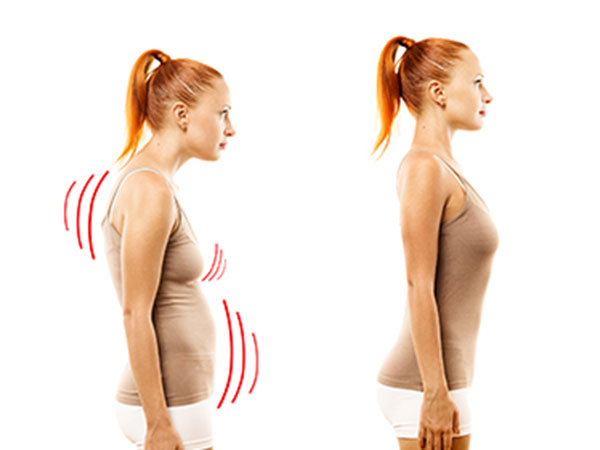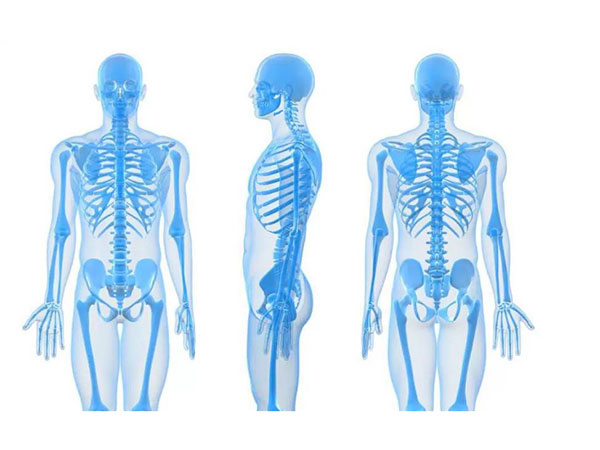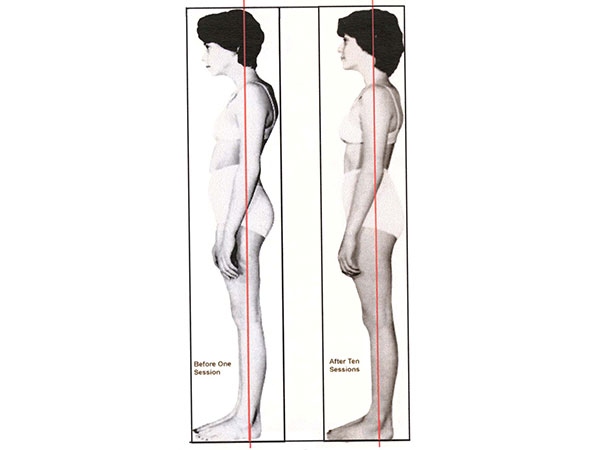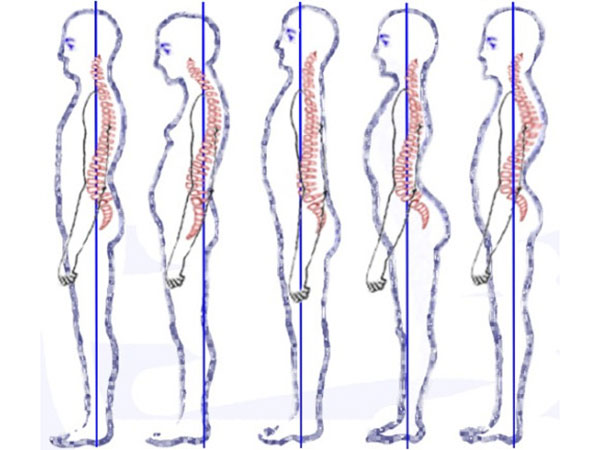Just In
- 9 hrs ago

- 9 hrs ago

- 13 hrs ago

- 14 hrs ago

Don't Miss
- Technology
 Apple Confirms Special Event for May 7: iPad Air, iPad Pro 2024 Models Expected
Apple Confirms Special Event for May 7: iPad Air, iPad Pro 2024 Models Expected - Finance
 TCS Vs Infosys Vs Wipro Shares, ADRs, Upcoming Dividends: Which Mega IT Stocks To Buy After Q4 Results?
TCS Vs Infosys Vs Wipro Shares, ADRs, Upcoming Dividends: Which Mega IT Stocks To Buy After Q4 Results? - Sports
 Who Won Yesterday's IPL Match 39? CSK vs LSG, IPL 2024 on April 23: Marcus Stoinis Fires 63-ball 124 To Quiet Chepauk
Who Won Yesterday's IPL Match 39? CSK vs LSG, IPL 2024 on April 23: Marcus Stoinis Fires 63-ball 124 To Quiet Chepauk - News
 Senator Lambie Calls For Elon Musk's Imprisonment Over Wakeley Church Stabbing Posts
Senator Lambie Calls For Elon Musk's Imprisonment Over Wakeley Church Stabbing Posts - Movies
 Mirzapur 3 OTT Release Date, Platform: When Will Mirzapur Season 3 Premiere On Amazon Prime Video?
Mirzapur 3 OTT Release Date, Platform: When Will Mirzapur Season 3 Premiere On Amazon Prime Video? - Education
 Telangana Inter Manabadi 1st and 2nd Year Results 2024 to be Declared Tomorrow
Telangana Inter Manabadi 1st and 2nd Year Results 2024 to be Declared Tomorrow - Automobiles
 Chrysler Pacifica Marks Seven Years As Most Awarded Minivan With New Campaign
Chrysler Pacifica Marks Seven Years As Most Awarded Minivan With New Campaign - Travel
Kurnool's Hidden Gems: A Guide To Exploring India's Lesser-Known Treasures
Rolfing Can Improve Posture, Reduce Stress And Relieve Chronic Pain
Rolfing is considered beneficial for all body types irrespective of the age. Rolfing is also known as structural integration. It denotes a holistic system of bodywork that manipulates the body's soft tissues deeply and also realigns and balances the body's myofascial structure with the field of gravity.[1]
The Rolfing practice dates back to the mid-20th century. Rolfing has been gaining ample popularity in recent years and it is believed to increase mobility, ease breathing, boost energy, relieve stress and also improves a person's overall well-being.
Read on to know more about how Rolfing can relieve pain and improve spine health.

What Is Rolfing?
When people begin to lose a fight with gravity, they experience it as a sharp pain in their back. In a few other cases, people may also perceive this as constant fatigue, unrelentingly threatening environments or as the unflattering contour of their body.[2] Usually, people over the age of forty, blame such pain on old age. However, the real fact that they are off balance is being ignored. This is where Rolfing lays its fundamental concepts. Rolfing aims at making the body work appropriately by making the force of gravity flow through such that the body can begin to heal itself.[3]
Rolfing is a holistic process of structural change that not just improves the physical well-being but even emotional wellness. It is used to improve posture, reduce stress and relieve chronic pain. Rolfing lays its focus on the fascia[4] (sheet of connective tissues in the body that forms beneath the skin to attach, stabilize, enclose and separate muscles and other organs).

Health Benefits Of Rolfing
The following are some of the impressive health benefits of rolfing:
1. Reduces chronic back pain
Chronic stress leads to tension in the back, neck and shoulders. These patterns of the body holding stress can get quite difficult to break, but rolfing is believed to be able to effectively correct these painful forms of tension. Rolfing has the ability to loosen the fascia. It thus frees up muscle movement and breaks bad patterns of muscle misuse and strain.
This release enables the back to properly align itself and hence back pain should recede [5] . Studies reveal that about one-third of acute low back pain cases turn chronic. Research believes that adding structural integration (rolfing) to outpatient rehabilitation can enhance reductions in low back pain-related disabilities. It also results in an increase in patient satisfaction.
2. Improves athletic ability
Rolfing has been identified to be quite beneficial for athletes. It changes their limiting physical behaviour. Rolfing teaches athletes how to use gravity in their favour[6] . Athletes who indulge in rolfing can see an improved physical ability through the improvement of posture.
Rolfing also works on lengthening constricted muscle fibres, improving ease of motion and relaxing areas of tension[7] . When muscles are enabled to operate more efficiently, rolfing increases the body's ability to conserve energy facilitating the development of refined patterns of movement for athletic activities (including everyday activities).

3. Relief for Temporomandibular joint syndrome (TMJ)
TMJ results in the inflammation and tightness of the joint that connects the jaw to the skull. Most people identify it as popping, locking, clicking and pain of the jaw. People suffering from TMJ can benefit from rolfing.
Relief is provided by releasing the joint from its painful and restricted state [8] . This way the jaw can be aligned properly again hence making it move smoothly without any discomfort.
4. Improves posture and spine health
People with posture problems can benefit a lot from rolfing. Studies have shown that rolfing is effective in treating lumbar lordosis (curvature of the spine)[9] . It is proven by research that the holistic soft tissue approach of rolfing improves overall musco-skeletal balance and alignment.
Rolfing also demonstrated improvements in the parasympathetic nervous system and this has been correlated with enhanced neurological function, including improved attention span and decreased levels of autonomic stress.
5. Improves asthma and breathing
People who suffer from asthma can utilize rolfing as an asthma natural remedy. There is evidence to prove that rolfing can improve breathing for people with asthma. This is made possible because rolfing breaks up restrictive patterns in the fascia, nerves and muscles in the chest thus preventing the limitation of full chest expansion for asthma sufferers[10] .
Incorrect or restricted breathing can also result in misalignments in the body that make breathing even harder. This can also be treated through the posture improvements that result from rolfing. Improving breathing results in a general improvement in the feelings of well-being, improvement in energy levels, reduction of stress, etc.
What To Expect During A Rolfing Session
Always wear comfortable clothing when heading for a rolfing session as this would allow easy physical movement. The session can take about 1 to 2 hours. Each session is carried out with the aim of freeing restrictions that are stuck in a certain area of the body.
The rolfers (rolf practitioners) begin the initial session by informing the patient about their current perceptual and movement responses (the cause behind the pain) followed by helping the client to explore the feeling of more fluid movements while walking, bending, lifting, breathing, etc.
The Rolf Institute of Structural Integration formulates the sessions as the Rolfing Ten-Series [11] . This series of rolfing treatments is further divided into three distinct units.
• Sessions 1 to 3
These sessions strive to loosen and balance surface layers of connective tissues. These are also called the 'sleeve' sessions.
The first session is usually devoted to enhancing the quality of breath with work on the rib cage, diaphragm and arms. An opening is also started along the upper leg, hamstrings, neck and spine [12] .
The second session gives the body a stable foundation. This is done by balancing the foot and the muscles of the lower leg.
The third session gives a side view for understanding how the head, shoulder girdle and hips are positionally related to one another while standing under the effect of gravity [13] . Thereon the body is addressed with the context of this new vision.

• Sessions 4 to 7
These are intended to be the core sessions[14] . These sessions work towards examining the terrain found between the bottom of the pelvis and top of the head. It also explores the deep tissue of the legs for its role in providing support.
Session four includes the inside arch of the foot and up the leg to the bottom of the pelvis.
Session five deals with balancing surface and deep abdominal muscles to the curve of the back.
Session
six
attains
more
support
and
movement
from
the
legs,
lower
back
and
pelvis.
Session
seven
turns
its
attention
to
the
head
and
neck.
• Sessions 8 to 10
These sessions allow the practitioner to blend the previously established advancements (and also the ones yet to be made) into the body. This is done in a way that encourages smooth movement and natural coordination.
Session 8 and 9 involve the practitioner determining how best to achieve the integration (it differs from person to person). Session 10 is the final session that serves to inspire a sense of order and balance[15] .

Possible Side Effects And Risk Factors
Before heading for a rolfing session, it is important to ensure that any form of chronic pain or discomfort is not caused by an underlying health issue. So, it is necessary that you undergo a general health examination prior to beginning a rolfing program. A person who wishes to attend a rolfing session but suffers an illness, injury or infection would first need to get a clearance from a doctor.
Rolfing may not be recommended for the following [16] :
•
People
with
a
psychological
disorder
•
Pregnant
women
•
Nursing
mothers
•
People
with
any
connective
tissue
disorder
•
Anyone
with
cancer
or
an
illness
that
can
spread
with
increased
circulation
•
People
with
a
blood-clotting
issue
•
Anyone
taking
blood
thinners
Few people might find rolfing to be painful, especially during the early sessions (before the tissue releases). The level of discomfort that one experiences during a rolfing session is dependent on several criteria, some of them are [17] :
•
The
degree
of
trauma
to
the
system
•
Duration
of
the
trauma
or
pain
in
a
particular
part
of
the
body
•
How
emotionally
linked
the
pain
is
for
the
individual
Rolfing practitioners usually vary their intensity as needed depending on each client's need. Usually, deeply held pain require greater intensity, which can cause longer discomfort. However, as the body releases and relaxes with each session, the discomfort slowly turns into a pleasant sensation.
Hydration before and after a rolfing session is highly recommended [18] . Soreness experienced after a rolfing session is mild in nature and responsive to basic heat and ice treatment.
- [1] James, H., Castaneda, L., Miller, M. E., & Findley, T. (2009). Rolfing structural integration treatment of cervical spine dysfunction.Journal of Bodywork and Movement Therapies,13(3), 229-238
- [2] Hansen, A. B., Price, K. S., Loi, E. C., Buysse, C. A., Jaramillo, T. M., Pico, E. L., & Feldman, H. M. (2014). Gait changes following myofascial structural integration (Rolfing) observed in 2 children with cerebral palsy.Journal of evidence-based complementary & alternative medicine,19(4), 297-300.
- [3] Jacobson E. (2011). Structural integration: origins and development.Journal of alternative and complementary medicine (New York, N.Y.),17(9), 775–780.
- [4] Baur, H., Gatterer, H., Hotter, B., & Kopp, M. (2017). Influence of structural integration and fascial fitness on body image and the perception of back pain.Journal of physical therapy science,29(6), 1010–1013.
- [5] Jacobson, E. E., Meleger, A. L., Bonato, P., Wayne, P. M., Langevin, H. M., Kaptchuk, T. J., & Davis, R. B. (2015). Structural integration as an adjunct to outpatient rehabilitation for chronic nonspecific low back pain: a randomized pilot clinical trial.Evidence-based complementary and alternative medicine : eCAM,2015, 813418.
- [6] Furlan, A. D., Yazdi, F., Tsertsvadze, A., Gross, A., Van Tulder, M., Santaguida, L., … Tsouros, S. (2011). A systematic review and meta-analysis of efficacy, cost-effectiveness, and safety of selected complementary and alternative medicine for neck and low-back pain.Evidence-based complementary and alternative medicine : eCAM,2012, 953139.
- [7] Liptan, G., Mist, S., Wright, C., Arzt, A., & Jones, K. D. (2013). A pilot study of myofascial release therapy compared to Swedish massage in fibromyalgia.Journal of bodywork and movement therapies,17(3), 365–370.
- [8] Gillespie, B. R. (1990). Assessment and treatment of TMJ muscles, fascia, ligaments, and associated structures.CRANIO®,8(1), 51-54.
- [9] Jacobson E. (2011). Structural integration, an alternative method of manual therapy and sensorimotor education.Journal of alternative and complementary medicine (New York, N.Y.),17(10), 891–899.
- [10] George, M., & Topaz, M. (2013). A systematic review of complementary and alternative medicine for asthma self-management.The Nursing clinics of North America,48(1), 53–149.
- [11] Jacobson E. (2011). Structural integration, an alternative method of manual therapy and sensorimotor education.Journal of alternative and complementary medicine (New York, N.Y.),17(10), 891–899.
- [12] Loi, E. C., Buysse, C. A., Price, K. S., Jaramillo, T. M., Pico, E. L., Hansen, A. B., & Feldman, H. M. (2015). Myofascial Structural Integration Therapy on Gross Motor Function and Gait of Young Children with Spastic Cerebral Palsy: A Randomized Controlled Trial.Frontiers in pediatrics,3, 74.
- [13] Jones, T. A. (2004). Rolfing.Physical medicine and rehabilitation clinics of North America,15(4), 799-809.
- [14] Vickers, A., Zollman, C., & Reinish, J. T. (2001). Massage therapies.Western Journal of Medicine,175(3), 202–204.
- [15] Sherman, K. J., Dixon, M. W., Thompson, D., & Cherkin, D. C. (2006). Development of a taxonomy to describe massage treatments for musculoskeletal pain.BMC complementary and alternative medicine,6, 24.
- [16] Glick, J. L., Andrinopoulos, K. M., Theall, K. P., & Kendall, C. (2018). "Tiptoeing Around the System": Alternative Healthcare Navigation Among Gender Minorities in New Orleans.Transgender health,3(1), 118–126.
- [17] Kong, L. J., Zhan, H. S., Cheng, Y. W., Yuan, W. A., Chen, B., & Fang, M. (2013). Massage therapy for neck and shoulder pain: a systematic review and meta-analysis.Evidence-based complementary and alternative medicine : eCAM,2013, 613279.
- [18] Casa, D. J., Stearns, R. L., Lopez, R. M., Ganio, M. S., McDermott, B. P., Walker Yeargin, S., … Maresh, C. M. (2010). Influence of hydration on physiological function and performance during trail running in the heat.Journal of athletic training,45(2), 147–156.
-
 wellnessHow Does Chronic Pain Affect The Immune System?
wellnessHow Does Chronic Pain Affect The Immune System? -
 disorders cureHow Graston Technique Can Be Used For Pain Relief
disorders cureHow Graston Technique Can Be Used For Pain Relief -
 disorders cureWhat Is Chronic Pain Syndrome And What Are Its Symptoms
disorders cureWhat Is Chronic Pain Syndrome And What Are Its Symptoms -
 disorders cureLady Gaga’s Fight With Fibromyalgia and What You Need to Know About it
disorders cureLady Gaga’s Fight With Fibromyalgia and What You Need to Know About it -
 wellnessPersistent Chronic Pain In Middle-Age Adults Can Be Fatal - Says Study
wellnessPersistent Chronic Pain In Middle-Age Adults Can Be Fatal - Says Study -
 disorders cure10 Tips To Avoid Chronic Pain
disorders cure10 Tips To Avoid Chronic Pain -
 wellnessImprove Your Posture With Five Simple Steps!
wellnessImprove Your Posture With Five Simple Steps! -
 insyncHow To Correct Your Posture While You Sit, Stand, And Work On The Computer
insyncHow To Correct Your Posture While You Sit, Stand, And Work On The Computer -
 wellnessDid You Know That The Way You Sit Can Impact Your Health?
wellnessDid You Know That The Way You Sit Can Impact Your Health? -
 wellnessThe Connection Between Ayurveda And Yoga Explained!
wellnessThe Connection Between Ayurveda And Yoga Explained! -
 disorders cureInternational Yoga Day 2019: Yoga Asanas For Back Pain Relief
disorders cureInternational Yoga Day 2019: Yoga Asanas For Back Pain Relief -
 wellnessWhat Is Decorticate Posturing And What Does It Indicate?
wellnessWhat Is Decorticate Posturing And What Does It Indicate?


 Click it and Unblock the Notifications
Click it and Unblock the Notifications



